Graffiti, demolition and angst in Shanghai
- Published
The BBC's John Sudworth: "The art... evokes a sense of sadness"
Demolition in China is often a sensitive, political subject, touching on the relative powerlessness of local residents in the face of omnipotent local officials.
And while Shanghai has retained more of its old architecture than many Chinese cities, the relentless pace of economic development has still swept large parts of it away.
A few months ago, colourful, poignant paintings began to appear amid the rubble on at least two building sites.
They're the work of French graffiti artist Julien Malland and Chinese artist Shi Zheng.
They probably would have gone largely unnoticed - however, a few days ago some of the images were published in a Chinese newspaper, and they went viral.
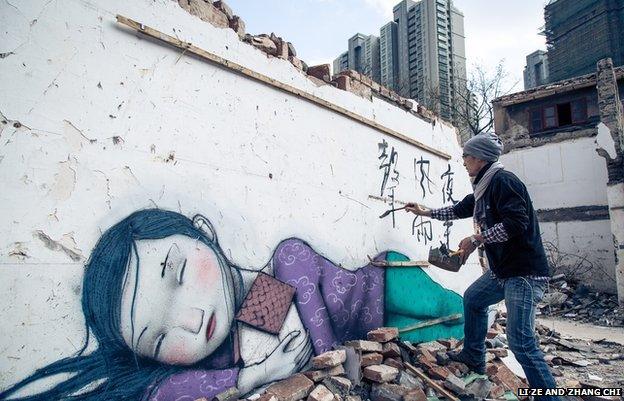
Paintings by Shi Zheng (R) began appearing on Shanghai walls last month
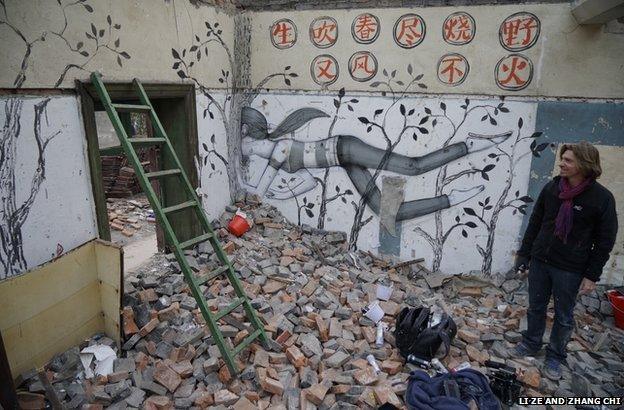
Frenchman Julien Malland has also been covering Shanghai's walls
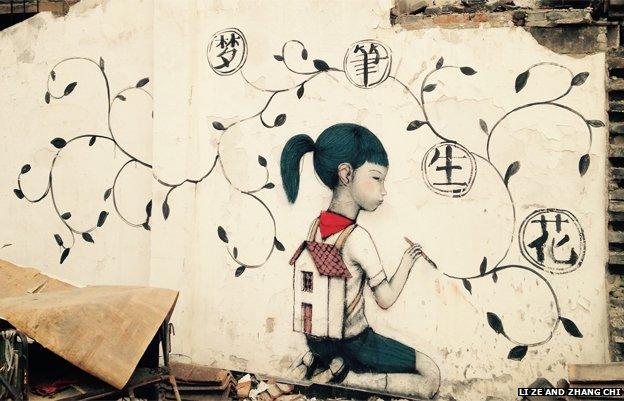
Their images often feature children and evoke a sense of sadness

However, after the publicity, their images were swiftly painted over or destroyed
The art appeared to resonate with many members of the public, evoking a sense of sadness for something that's been lost amid China's decades-long construction boom.
Children appear frequently in the work, lovingly clutching small representations of their homes to their chests, or wearing them, like bags, on their backs.
The publicity, though, attracted dozens of curious visitors and amateur photographers to one of the demolition sites in Shanghai's Jing'an district.
Even soon-to-be-married couples turned up, wanting to use the paintings as backdrops for their wedding photos.
That, it seems, prompted the authorities to act.
'Evoking the past'
Citing safety concerns, the district government ordered the paintings to be removed, an order that was quickly carried out.
The art has now been painted over or chiselled away from the plaster, prompting an angry public outcry.
Some internet users seem less than convinced by the safety argument, and have been asking why, as the images were all soon to be destroyed anyway, they could not have been left a little while longer.
State media has been covering the debate, quoting a member of Shanghai's People's Political Consultative Conference, Dai Jianguo, as saying that a bit of careful management - he suggested a requirement that visitors wear hard-hats - would have allowed the public to continue to enjoy the images.
"They brought people back to the past and evoked memories about the old houses," he said.
And anyway, some of those old houses that found themselves inadvertently in the middle of the open-air art gallery still have people living in them.

Elsewhere in Shanghai, similar images have been appearing...

...and disappearing
As the walls are being torn down around them, they are the "last-standers", a common site on Chinese demolition sites as a few die-hard residents hold on.
Often with red flags flying, they stay, either in protest over the homes they don't want to lose, or simply in the hope of winning better rates of compensation.
The artwork was not overtly political, but given the sensitive context to development in China, it did have a certain edginess.
And its removal highlights a difficulty faced by authoritarian governments anywhere.
Even a decision that may well be in the interests of public safety risks being interpreted as, well, authoritarian.
- Published20 December 2013
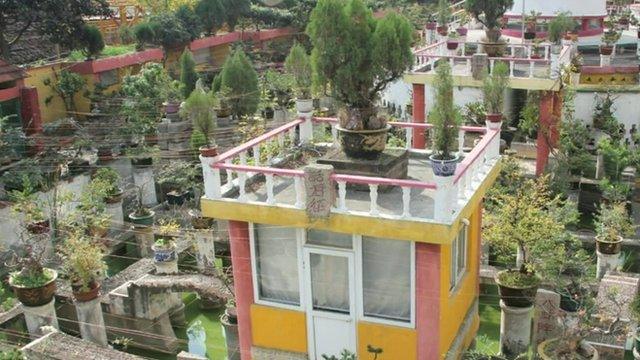
- Published25 December 2013
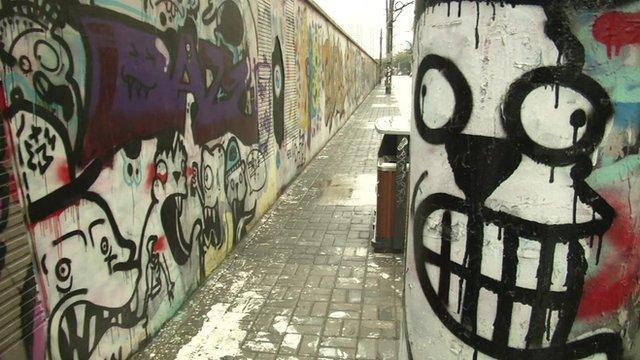
- Published22 September 2015